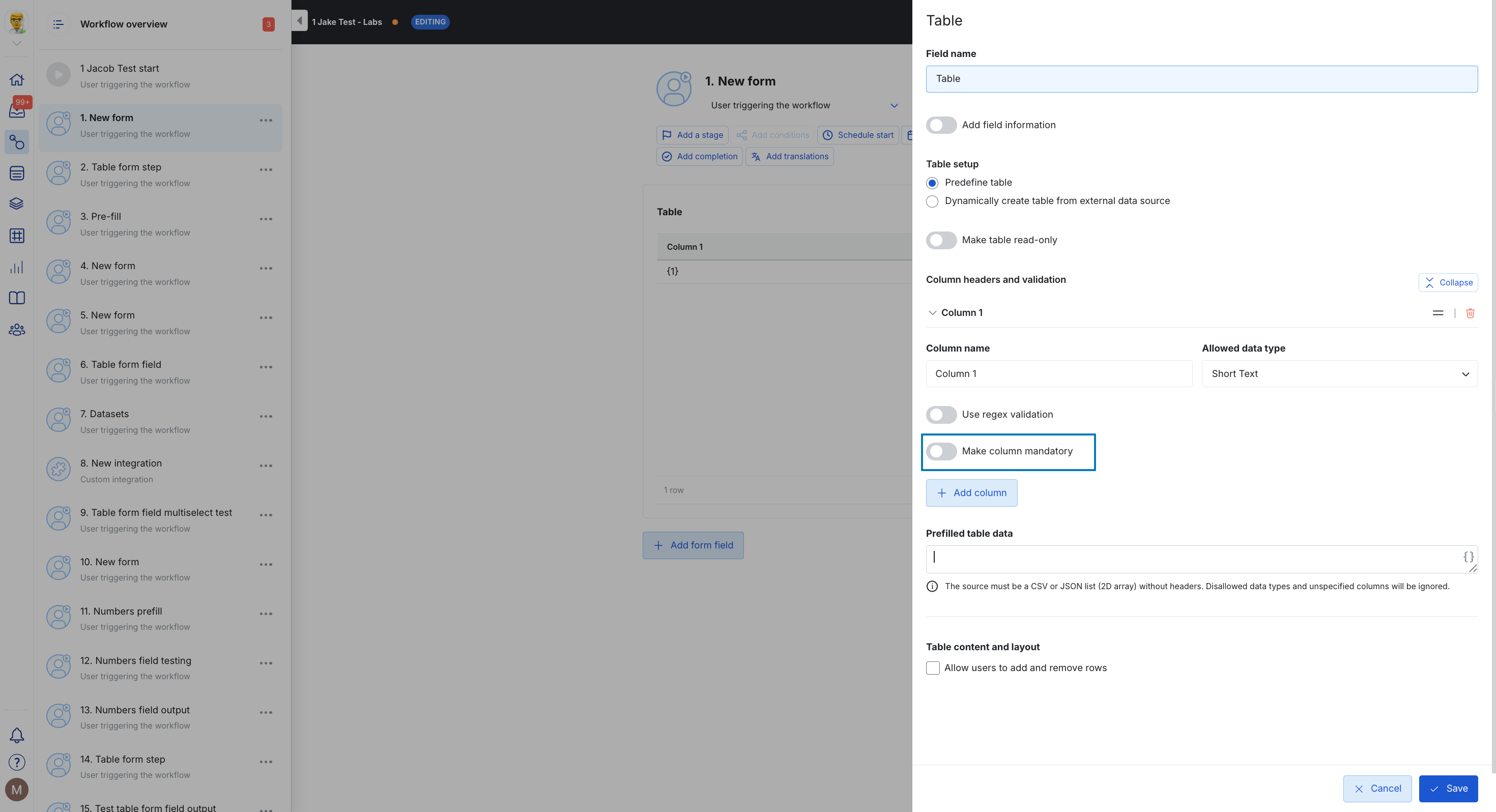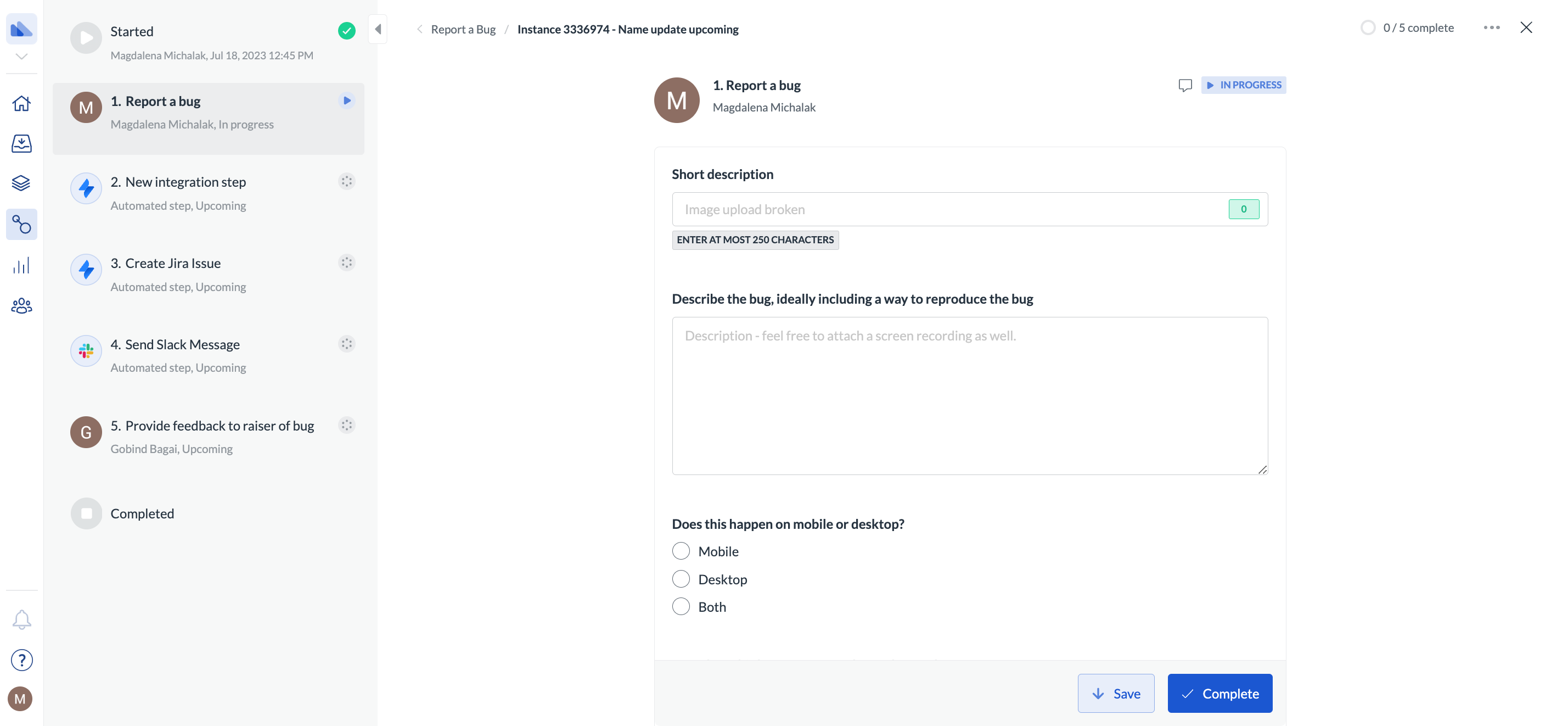
Explore types of form fields
Explore types of form fields
Form configuration
You can work with form field configuration when you click on a step and add a form field.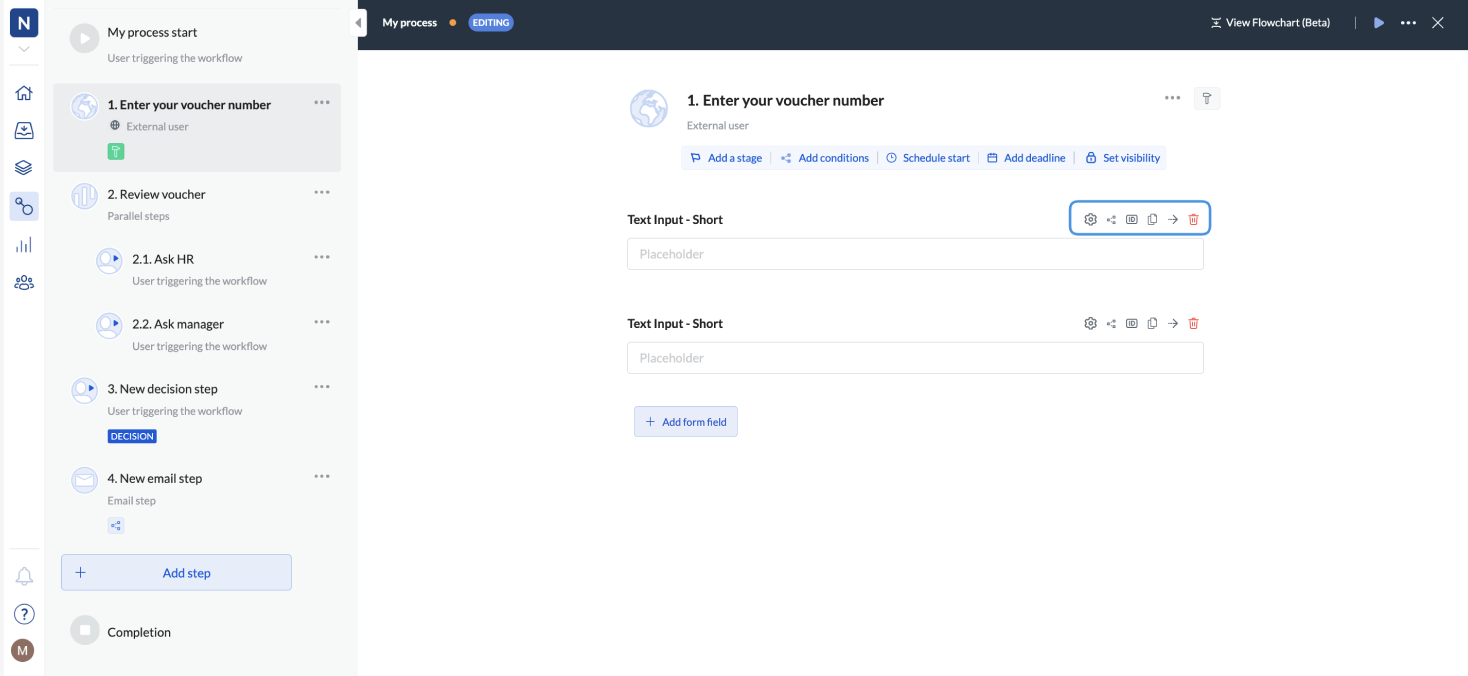
- Go to Workflows > Edit workflow.
- Click Add step.
- Select Form.
- Click Add form field.
- Click the settings icon to add placeholders for fields or labels (step titles), and make the step optional.
Setting form conditions works in the same way as step conditions. For details, see Set conditions to a step.
Edit a form field
After you’ve completed a form, you can still edit the fields if you’re an admin or a user assigned to the step or if the step has been delegated to you. If you go to the step (by following a link in the email), you can click the pencil icon, update your field data, and save your changes. Notes:- You can edit the step if the workflow hasn’t been completed.
- If there are conditions related to the step or any other dependencies that have already been completed, updating the field doesn’t change them.
- You can’t update the completed step using the API.
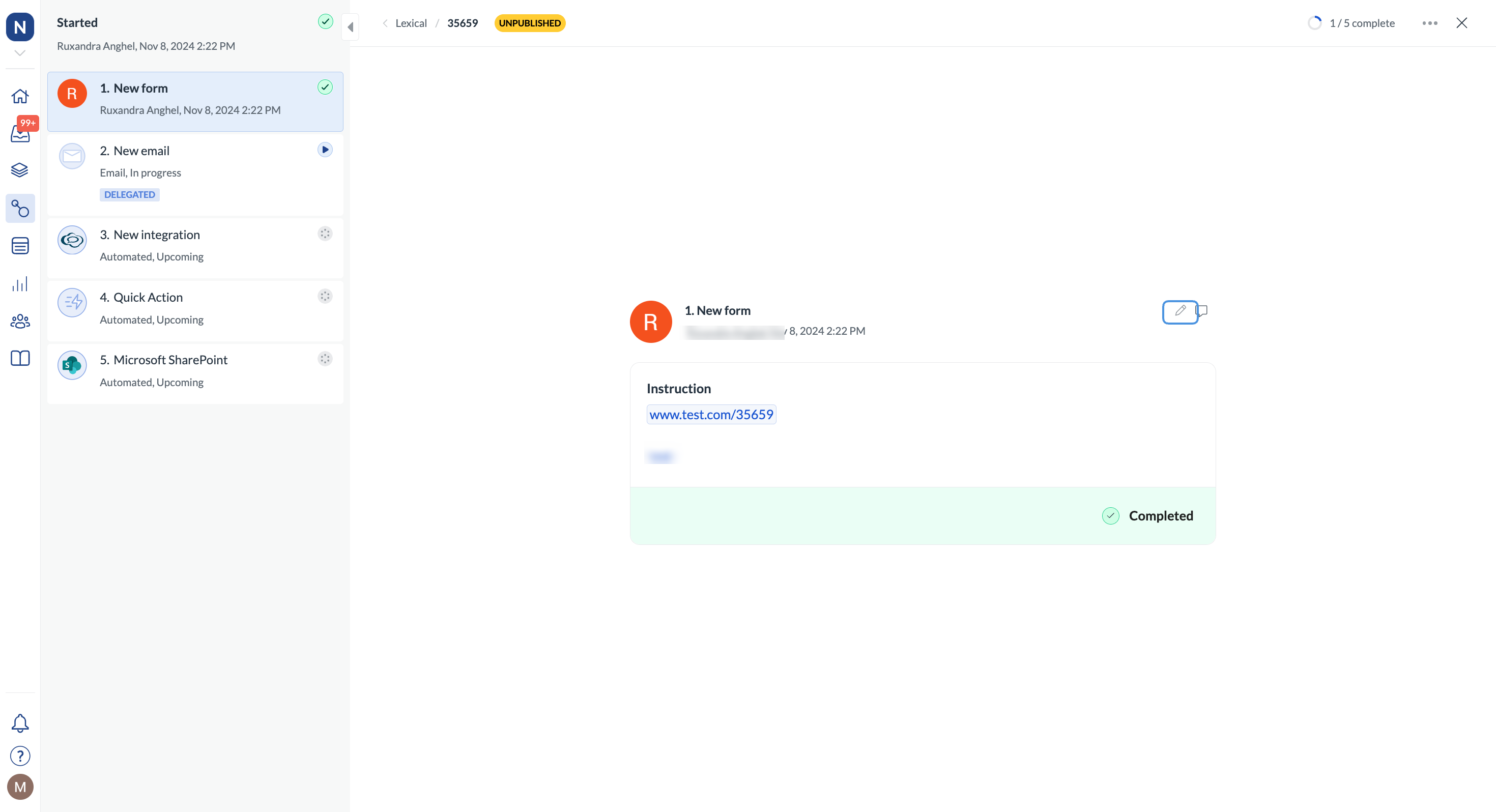
Required form fields
If you want to ensure users complete all necessary information before proceeding, you can make form fields required. When a form field is required, users must provide input (fill in an answer or select an option) to complete the step. By default, form fields are required, and a builder (or anyone with editing rights) needs to intentionally select Make field optional to change this setting. This helps meet auditing requirements by creating locked forms where all fields must be completed before users can proceed.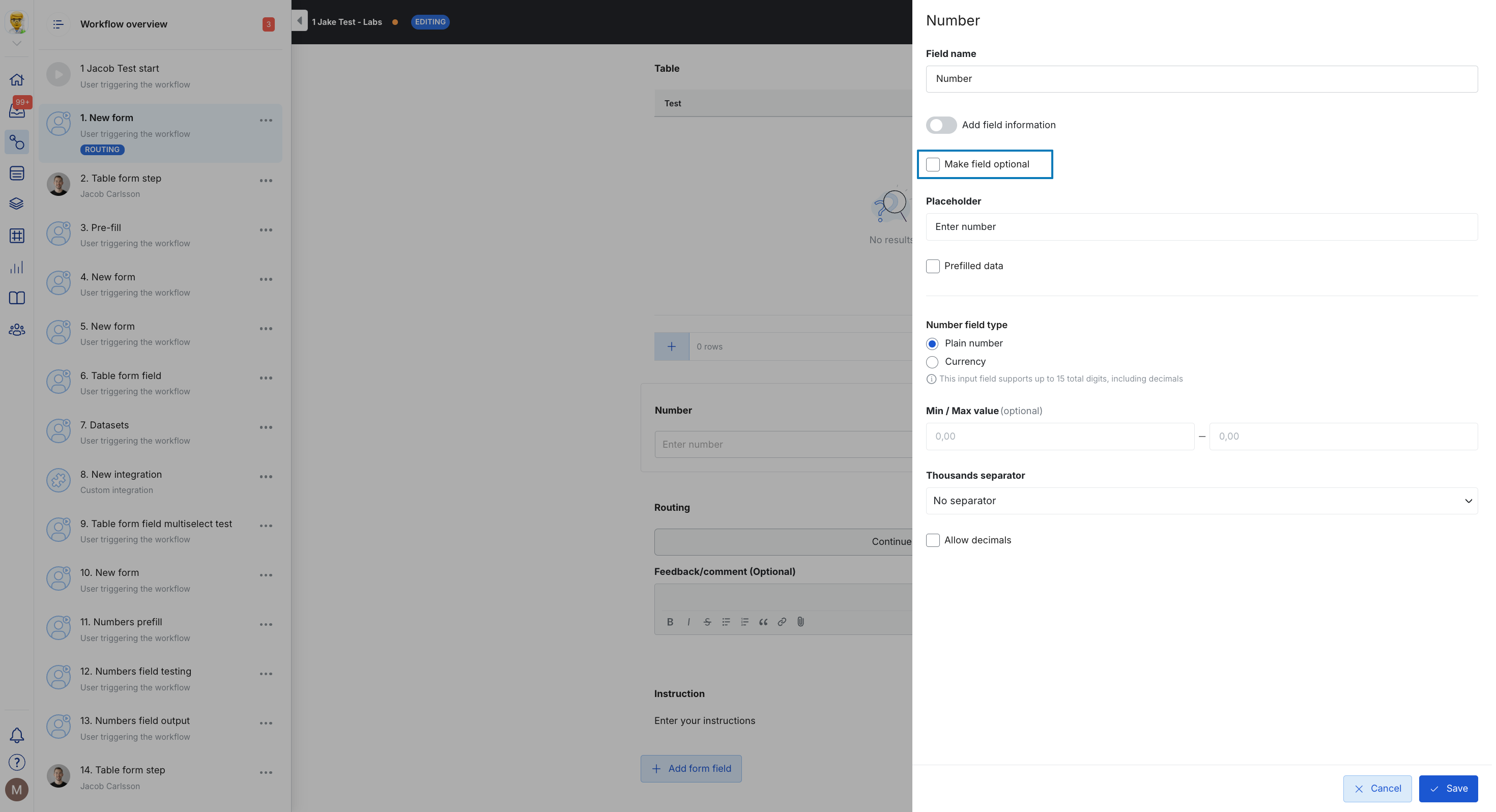
Do all fields have the optional checkbox?
Do all fields have the optional checkbox?
No, Instruction fields can’t be made optional because they only display text or data to the user and are not meant for data collection.Similarly, the Routing field can’t be made optional because the user must click an option to push the workflow further, stop it, or push it back.Table fields (pre-defined tables) are required if at least one column is marked as mandatory. Table columns are optional by default, and you can mark them as mandatory if you want users to review content ot add values in blank cells.